Introduction
In today’s fast-paced manufacturing industries, efficiency and productivity are key factors for success. One technology that has revolutionized the production process is the guide rail roll forming machine. This article will delve into the world of guide rail roll forming machines, exploring their functionality, benefits, applications, key components, operation, maintenance, and troubleshooting.
What is a Guide Rail Roll Forming Machine?
A guide rail roll forming machine is a specialized piece of equipment used to produce guide rails, which are commonly used in various industries such as construction, automotive, and manufacturing. This machine utilizes a roll forming process to transform a flat sheet of metal into a continuous profile with precise dimensions and shapes. The guide rail produced by this machine serves as a track or support system for other components, allowing for smooth and controlled movement.
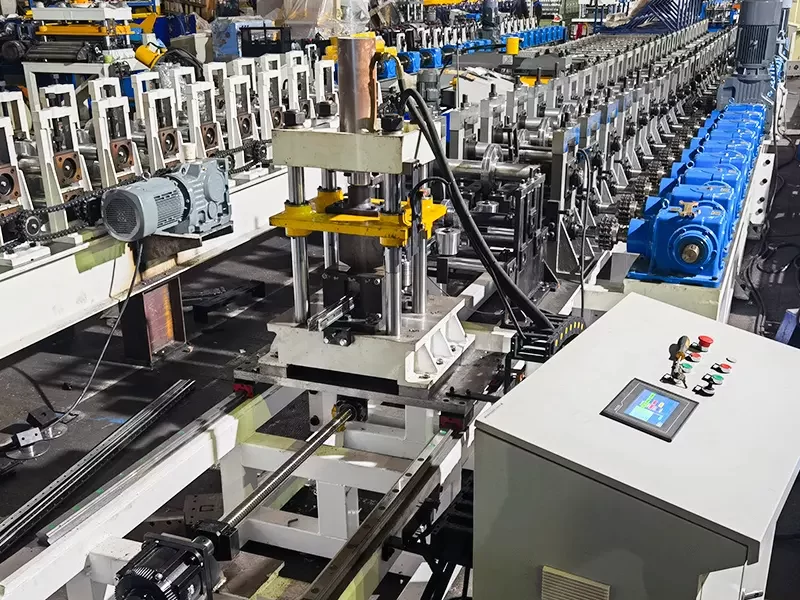
Benefits of Using a Guide Rail Roll Forming Machine
Efficient Production Process
Guide rail roll forming machines offer significant advantages in terms of production efficiency. By automating the roll forming process, these machines can produce guide rails at a rapid rate, reducing manual labor and increasing output. The continuous production line ensures a seamless workflow, minimizing downtime between batches and optimizing overall productivity.
Customization Options
With guide rail roll forming machines, customization becomes effortless. Manufacturers can easily adjust the machine settings to produce guide rails of different lengths, widths, and profiles. This flexibility allows for the creation of tailored solutions that meet specific project requirements, eliminating the need for outsourcing or relying on standard off-the-shelf options.
Cost Savings
Investing in a guide rail roll forming machine can lead to substantial cost savings in the long run. By streamlining the production process and minimizing material waste, these machines contribute to overall cost reduction. Additionally, the ability to customize guide rails in-house eliminates the need for expensive tooling and reduces lead times, resulting in significant savings for manufacturers.
High-Quality Output
Guide rail roll forming machines ensure consistent and high-quality output. The precise control of the roll forming process guarantees accurate dimensions and uniform profiles throughout the production cycle. This level of quality is essential for industries that require reliable and durable guide rails, ensuring smooth operations and enhanced product performance.
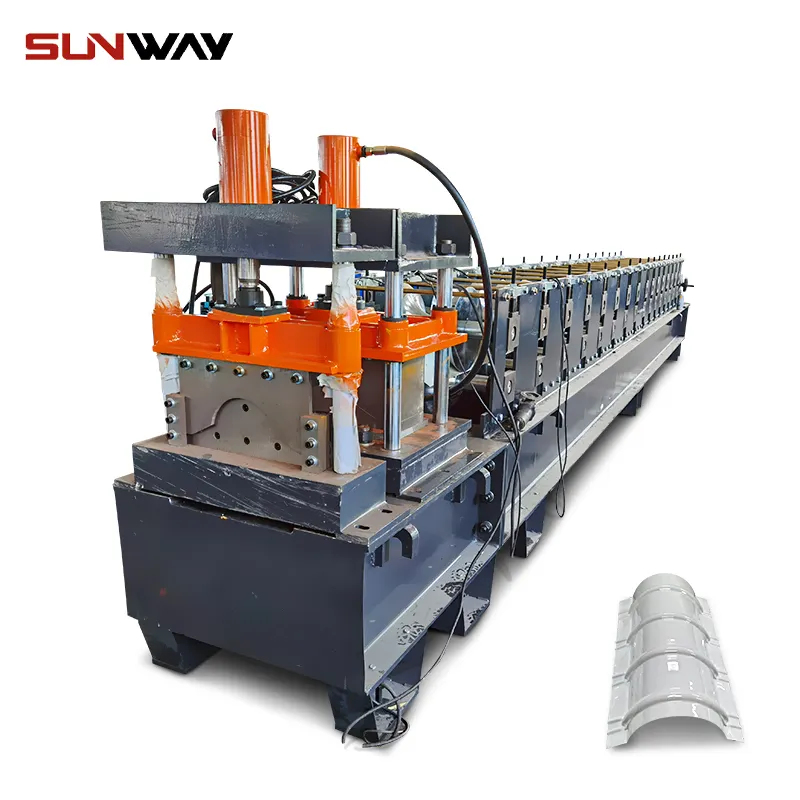
Applications of Guide Rail Roll Forming Machines
Guide rail roll forming machines find applications in various industries, including:
Construction Industry
In the construction industry, guide rails are extensively used in the installation of elevators, escalators, and handrails. The guide rail roll forming machine enables construction companies to produce these components efficiently and with high precision, meeting the demands of modern infrastructure projects.
Automotive Industry
In the automotive sector, guide rails are crucial for vehicle seating systems, sunroof mechanisms, and sliding doors. By utilizing guide rail roll forming machines, automotive manufacturers can achieve cost-effective production of these components while maintaining the required quality standards.
Manufacturing Industry
The manufacturing industry relies on guide rails for conveyor systems, material handling equipment, and assembly lines. Guide rail roll forming machines facilitate the production of these components, enabling manufacturers to improve operational efficiency and optimize their production processes.
Key Components of a Guide Rail Roll Forming Machine
A guide rail roll forming machine consists of several key components, each playing a crucial role in the production process:
Material Handling System
The material handling system is responsible for feeding the flat sheet of metal into the roll forming machine. It ensures a smooth and continuous flow of material, enabling efficient production.
Roll Forming System
The roll forming system is the heart of the machine, where the transformation of the metal sheet into a profiled guide rail occurs. A series of rollers gradually shape the material, forming it into the desired profile.
Cutting System
Once the guide rail profile is formed, the cutting system separates the continuous rail into individual pieces of the desired length. This system can employ various cutting methods, such as hydraulic shearing or flying saws, depending on the machine design and specific requirements.
Control System
The control system oversees and regulates the entire machine operation. It manages the speed, feeding, and cutting processes, ensuring precise control and consistency in the production of guide rails.
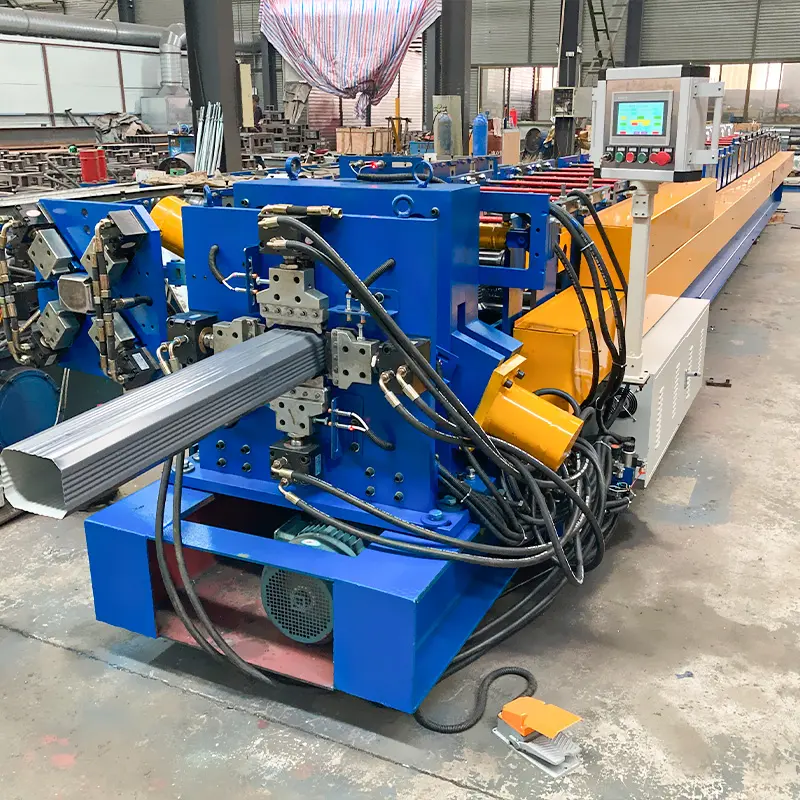
Choosing the Right Guide Rail Roll Forming Machine
When selecting a guide rail roll forming machine, several factors should be taken into consideration:
Production Requirements
Evaluate the production volume and guide rail specifications required for your specific applications. This assessment will help determine the appropriate machine size and production capacity needed to meet your manufacturing goals.
Machine Specifications
Consider the machine’s capabilities, including the maximum material thickness, profile complexity, and cutting methods available. Ensure that the machine specifications align with your production requirements and desired guide rail designs.
Manufacturer Reputation and Support
Choose a reputable manufacturer with a proven track record in producing guide rail roll forming machines. Research customer reviews, seek recommendations, and assess the level of after-sales support provided by the manufacturer.
Operating a Guide Rail Roll Forming Machine
Efficient operation of a guide rail roll forming machine involves several key steps:
Machine Setup and Calibration
Before starting production, the machine must be properly set up and calibrated. This includes adjusting the roller positions, ensuring proper alignment, and configuring the control system parameters according to the desired guide rail specifications.
Loading and Feeding the Material
The flat sheet of metal is loaded onto the material handling system, which feeds it into the roll forming system. Proper alignment and tension control are crucial to ensure consistent material flow and accurate profile formation.
Adjusting the Machine Parameters
Depending on the guide rail specifications, the machine parameters need to be adjusted accordingly. This may involve modifying the roller positions, speed, and cutting length to achieve the desired profile dimensions and tolerances.
Quality Control and Inspection
Regular quality control checks should be performed throughout the production process. This includes measuring the dimensions of the guide rails, inspecting the surface finish, and ensuring that the profiles meet the required specifications. Any deviations or defects should be identified and addressed promptly to maintain the quality of the output.
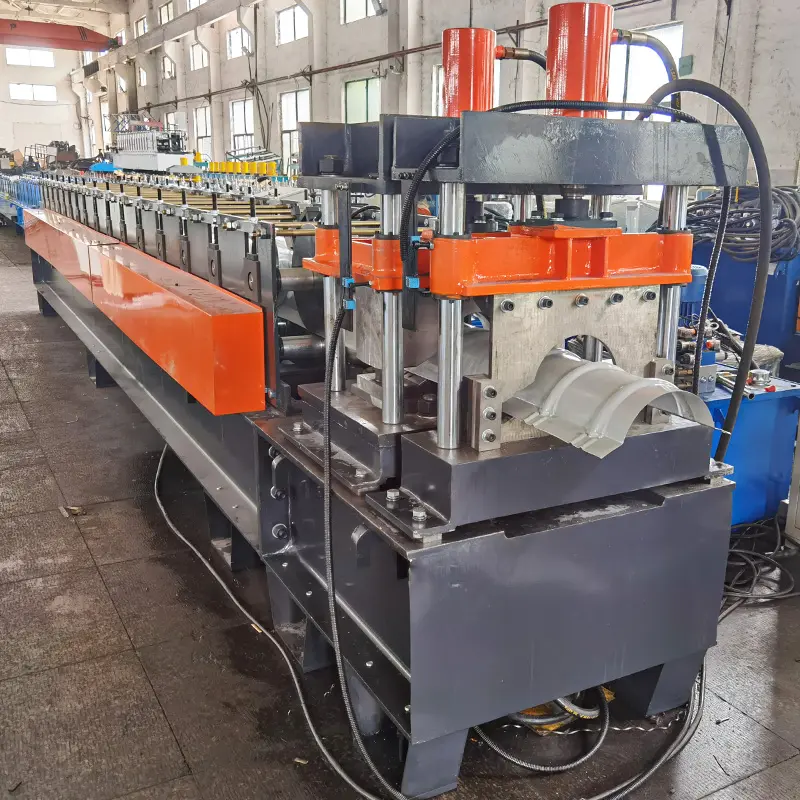
Maintenance and Safety Considerations
To ensure the smooth operation and longevity of the guide rail roll forming machine, regular maintenance and safety measures should be implemented:
Regular Cleaning and Lubrication
Clean the machine regularly to remove debris and prevent build-up that could affect its performance. Lubricate the moving parts to minimize friction and ensure smooth operation. Follow the manufacturer’s guidelines for the recommended cleaning and lubrication procedures.
Inspection and Replacement of Parts
Periodically inspect the machine components for wear and tear. Replace any worn-out or damaged parts to prevent malfunctions and maintain the machine’s efficiency. Keep a record of maintenance activities and adhere to the maintenance schedule provided by the manufacturer.
Operator Safety Training
Train operators on the proper operation and safety protocols associated with the guide rail roll forming machine. Ensure they are familiar with emergency stop procedures, safety guards, and personal protective equipment. Regularly reinforce safety practices to create a secure working environment.
Emergency Procedures
Establish clear emergency procedures in case of machine malfunction, power outage, or any unforeseen circumstances. Operators should be aware of the steps to take to ensure their safety and the safety of others. Conduct drills periodically to reinforce emergency response protocols.
Troubleshooting Common Issues
Despite proper maintenance and care, guide rail roll forming machines may encounter common issues. Here are some troubleshooting tips for addressing these problems:
Material Jamming
If the material gets jammed in the machine, stop the production immediately and investigate the cause of the jam. Clear any obstructions carefully, ensuring that the machine is powered off and safe to handle. Check the material alignment and tension control to prevent future jams.
Incorrect Dimensions
If the guide rails produced have incorrect dimensions, review the machine settings and adjust them accordingly. Verify the roller positions, speed, and cutting length to ensure accurate profile formation. Double-check the material specifications to ensure they match the machine requirements.
Machine Malfunction
In the event of a machine malfunction, consult the machine’s manual or contact the manufacturer for troubleshooting guidance. Follow their instructions to identify and resolve the issue. If necessary, seek professional assistance to repair or replace any faulty components.
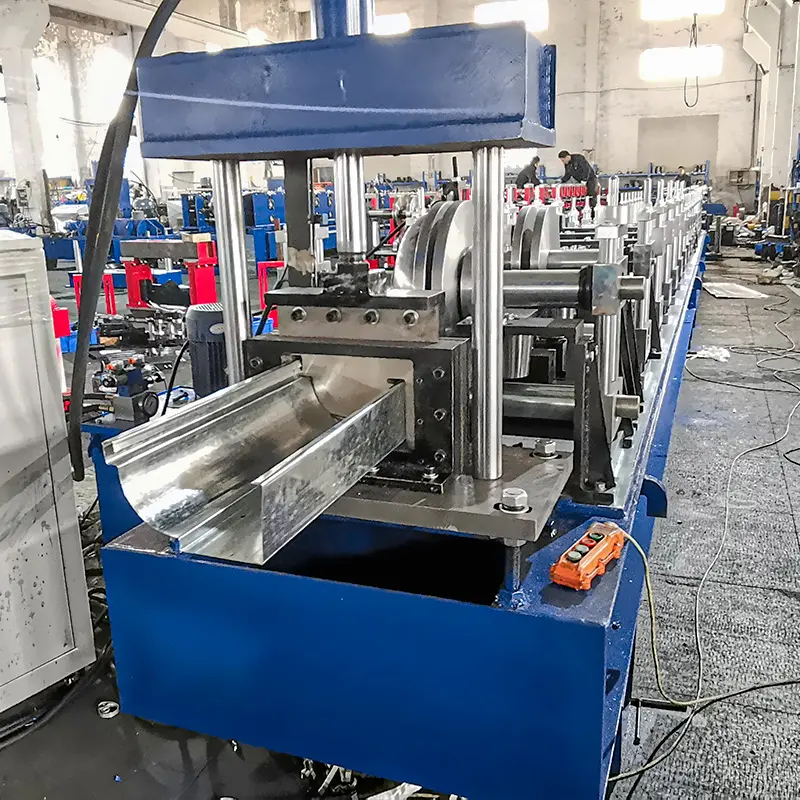
Conclusion
Guide rail roll forming machines have become indispensable tools in various industries, providing efficient and customizable solutions for producing guide rails. By streamlining the production process, offering customization options, and delivering high-quality output, these machines contribute to increased productivity, cost savings, and enhanced product performance. Proper operation, maintenance, and troubleshooting practices are crucial to maximizing the machine’s capabilities and ensuring safe and reliable production.
FAQs
1. Can guide rail roll forming machines produce guide rails with complex profiles?
Yes, guide rail roll forming machines can be configured to produce guide rails with complex profiles. By adjusting the roller positions and controlling the feeding and cutting processes, these machines can achieve precise and intricate profiles.
2. What types of materials can be used with guide rail roll forming machines?
Guide rail roll forming machines can process various materials, including stainless steel, galvanized steel, aluminum, and other metals. The material choice depends on the specific application requirements and desired properties of the guide rails.
3. How long does it take to set up a guide rail roll forming machine for a new production run?
The setup time for a guide rail roll forming machine can vary depending on the complexity of the guide rail design and the operator’s familiarity with the machine. On average, it may take a few hours to set up the machine, including adjusting the rollers, configuring the control system, and ensuring proper material alignment.
4. Are guide rail roll forming machines suitable for small-scale manufacturing businesses?
Yes, guide rail roll forming machines can be beneficial for small-scale manufacturing businesses. They offer cost-effective production, customization options, and efficient operation, making them suitable for various production volumes and requirements.
5. Can guide rail roll forming machines be integrated into existing production lines?
Yes, guide rail roll forming machines can be integrated into existing production lines. Their modular design allows for seamless integration with other equipment, such as cutting systems, bending machines, and material handling systems. This flexibility enables manufacturers to enhance their production processes without significant disruptions.
Remember to proofread and make any necessary adjustments to the article to ensure its accuracy, clarity, and readability.
